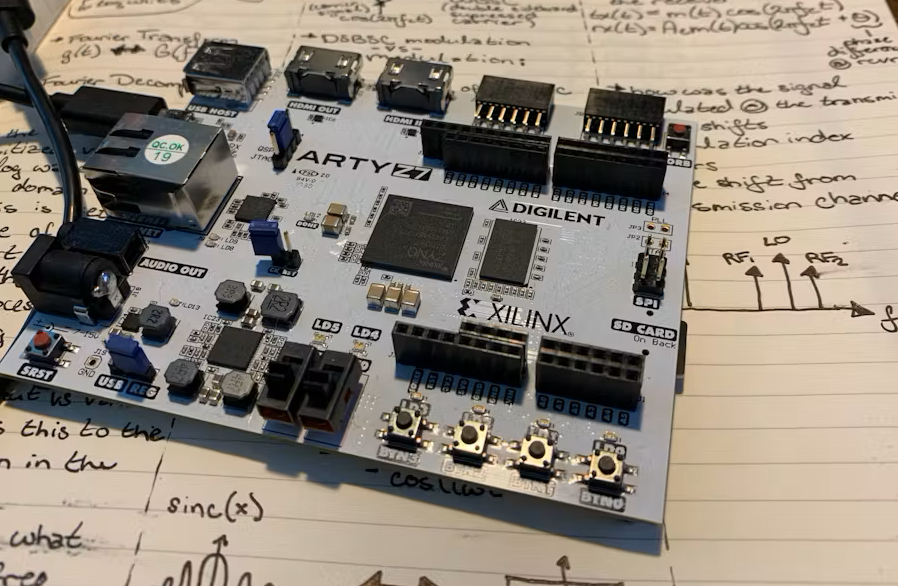
How to Use DDR Memory with FPGA for DSP Application?
Global electronic component supplier AMPHEO PTY LTD: Rich inventory for one-stop shopping. Inquire easily, and receive fast, customized solutions and quotes.
DDR (Double Data Rate) memory is commonly used in FPGA-based DSP (Digital Signal Processing) applications to store large datasets, filter coefficients, or real-time signal buffers. Here’s a step-by-step guide to integrating DDR memory with an FPGA for DSP.

1. Choose the Right DDR Memory & FPGA
DDR Memory Types
| Type | Speed (MHz) | Bandwidth | Use Case |
|---|---|---|---|
| DDR3 | 400-1066 | Moderate | General DSP, Video Processing |
| DDR4 | 800-3200 | High | High-performance DSP (Radar, AI) |
| LPDDR | 400-4266 | Low Power | Battery-powered DSP Systems |
| DDR2 | 200-533 | Legacy | Low-cost, older designs |
FPGA Requirements
-
DDR Memory Controller IP (Xilinx MIG, Intel UniPHY, Lattice DDR IP).
-
Sufficient I/O Pins (DQ, DQS, CLK, ADDR, CMD).
-
High-Speed Transceivers (if using DDR4/LPDDR4).
2. Hardware Design Considerations
PCB Layout Guidelines
-
Impedance Matching:
-
DDR traces (DQ, DQS) should be 50Ω single-ended or 100Ω differential.
-
Length-match data lanes (±50ps skew tolerance).
-
-
Power Delivery:
-
Use low-ESR decoupling capacitors near DDR power pins.
-
Follow FPGA vendor’s power sequencing requirements.
-
-
Routing:
-
Keep DQ/DQS/CLK traces short and away from noise sources.
-
Use fly-by topology for DDR3/4 address/command lines.
-
3. FPGA DDR Interface Setup
Step 1: Generate Memory Controller IP
-
Xilinx (Vivado):
-
Use Memory Interface Generator (MIG).
-
Configure:
-
Memory type (DDR3/DDR4).
-
Data width (e.g., 16-bit, 32-bit, 64-bit).
-
Clock speed (e.g., 800 MHz DDR3 → 400 MHz actual clock).
-
-
-
Intel (Quartus):
-
Use UniPHY DDR Controller.
-
Set up timing constraints (
set_input_delay,set_output_delay).
-
Step 2: Connect FPGA to DDR
-
Signals to Map:
-
DQ[0:N-1] (Data lines).
-
DQS (Data Strobe, differential for DDR3/4).
-
CLK/CLK# (Differential clock).
-
ADDR/CMD (Bank, Row, Column, RAS/CAS/WE).
-
ODT (On-Die Termination, DDR3/4 only).
-
Step 3: Add Timing Constraints
-
Define clock relationships (
create_clock,set_input_delay). -
Example (Xilinx):
create_clock -period 5.0 -name ddr_clk [get_ports ddr_clk_p] set_input_delay -clock ddr_clk -max 1.5 [get_ports ddr_dq*]
4. DSP Data Access Strategies
Burst Mode for Efficiency
-
DDR works best with sequential bursts (e.g., 8-word bursts for DDR3).
-
Example: Reading a 1024-point FFT buffer in 64-byte chunks.
Double Buffering (Ping-Pong)
-
Use two memory blocks to avoid stalls:
-
Buffer A: DSP writes new data.
-
Buffer B: DSP reads processed data.
-
DMA for High-Speed Transfer
-
Offload memory transfers to FPGA-based DMA.
-
Example: Xilinx AXI DMA IP for AXI4-stream ↔ DDR transfers.
5. DSP-Specific Optimizations
Memory Access Patterns
-
Block RAM (BRAM) Cache: Store frequently used coefficients.
-
Scatter-Gather DMA: For non-contiguous DSP data (e.g., sparse FIR filters).
Example: FIR Filter with DDR
-
Store coefficients in DDR.
-
Stream input samples via AXI4-Stream.
-
Multiply-Accumulate (MAC) in FPGA logic.
-
Write results back to DDR.
6. Debugging & Validation
Signal Integrity Checks
-
Use an oscilloscope to verify:
-
DQS-DQ alignment (eye diagram).
-
Clock jitter (<5% UI for DDR3).
-
FPGA Debug Tools
-
Xilinx ILA (Integrated Logic Analyzer) for DDR traffic.
-
Intel Signal Tap for monitoring read/write cycles.
Test Patterns
-
Write/read known patterns (e.g.,
0xAA55AA55) to verify correctness.
7. Common Pitfalls & Fixes
| Issue | Cause | Solution |
|---|---|---|
| Data corruption | Timing violations | Tighten constraints, adjust PCB routing |
| High latency | Non-sequential access | Use burst mode, prefetching |
| DDR not initializing | Power sequencing error | Check reset timing, voltage levels |
Conclusion
To use DDR memory with an FPGA for DSP:
-
Choose the right DDR type (DDR3/DDR4/LPDDR).
-
Design PCB carefully (impedance, length matching).
-
Generate a memory controller (MIG/UniPHY).
-
Optimize DSP access (burst mode, DMA, caching).
-
Debug with ILA/Signal Tap and signal integrity checks.
This approach ensures high-speed, reliable DSP processing with DDR memory.
Related Articles
- ·The best MCUs/MPUs for industrial humanoid robots
- ·What are the advantages and disadvantages of using SoCs in embedded systems?
- ·What are the differences between FPGA and DSP processors for signal processing?
- ·What is the Difference Between 8085 and 8086 Microprocessor?
- ·Digital Signal Processors vs x86 Architecture, What's the Different?
- ·How to become an FPGA engineer? Which FPGA board and program are suitable for beginners?
- ·How to Generate Low Clock Frequencies in FPGA?
- ·Application of Embedded Systems in Aerospace and Defense Fields
- ·Comparison of FPGA, ARM, STM32, and DSP Platforms
